
Krasnoyarsk is the largest city and administrative center of Krasnoyarsk Krai, Russia. It is situated along the Yenisey River, and is the third-largest city in Siberia after Novosibirsk and Omsk, with a population of over 1 million. Krasnoyarsk is an important junction of the renowned Trans-Siberian Railway, and is one of the largest producers of aluminium in the country.

Krasnoyarsk Krai is a federal subject of Russia, with its administrative center in the city of Krasnoyarsk, the third-largest city in Siberia. Comprising half of the Siberian Federal District, Krasnoyarsk Krai is the largest krai in the Russian Federation, the second largest federal subject and the third largest subnational governing body by area in the world, after Sakha and the Australian state of Western Australia. The krai covers an area of 2,339,700 square kilometers (903,400 sq mi), which is nearly one quarter the size of the entire country of Canada, constituting roughly 13% of the Russian Federation's total area and containing a population of 2,828,187, or just under 2% of its population, per the 2010 Census.

The Khanate of Sibir, was a Tatar Khanate located in southwestern Siberia with a Turco-Mongol ruling class. Throughout its history, members of the Shaybanid and Taibugid dynasties often contested the rulership over the Khanate between each other; both of these competing tribes were direct patrilineal descendants of Genghis Khan through his eldest son Jochi and Jochi's fifth son Shayban (Shiban). The area of the Khanate had once formed an integral part of the Mongol Empire, and later came under the control of the White Horde and the Golden Horde of 1242-1502.

The early history of Siberia was greatly influenced by the sophisticated nomadic civilizations of the Scythians (Pazyryk) on the west of the Ural Mountains and Xiongnu (Noin-Ula) on the east of the Urals, both flourishing before the Christian era. The steppes of Siberia were occupied by a succession of nomadic peoples, including the Khitan people, various Turkic peoples, and the Mongol Empire. In the late Middle Ages, Tibetan Buddhism spread into the areas south of Lake Baikal.

Dmitry Anatolyevich Medvedev is a Russian politician serving as deputy chairman of the Security Council of Russia since 2020. Medvedev served as president from 2008 to 2012 and as prime minister from 2012 to 2020.
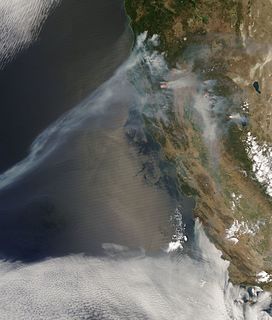
The 2008 California wildfire season was one of the most devastating since the turn of the 21st Century. While 6,255 fires occurred, about two-thirds as many as in 2007, the total area exceeded that of the previous years, far exceeding the total area of each year prior to 2007. Throughout the year, 1,593,690 acres (6,449.4 km2) of land were burned.
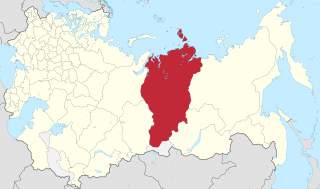
Yeniseysk Governorate was a governorate (guberniya) of the Russian Empire and later of the Russian Socialist Federative Soviet Republic.

The 2010 Russian wildfires were several hundred wildfires that broke out across Russia, primarily in the west in summer 2010. They started burning in late July and lasted until early September 2010. The fires were associated with record-high temperatures, which were attributed to climate change—the summer had been the hottest recorded in Russian history—and drought.

The Aerial Forest Protection Service is a Russian government agency charged primarily with the aerial management of forest fires. It is considered a branch of the Russian Federal Forest Service. It is famous for the creation and use of smoke jumpers; paratroopers who drop using parachutes down into villages in the path of the fire to warn residents and to provide them with help in evacuation procedures. Smoke jumpers also jump directly into forest fires to help the officials in extinguishing the fires. Until 2007, the Avialesookhrana was the only Russian organization charged with handling forest fires. They are also credited with helping the Republic of Mongolia and Cuba create their own forest-fire prevention agencies.

Siberian Baroque is an architectural style common for ambitious structures in 18th-century Siberia, where 115 stone churches in Siberia were recorded in 1803, most of which were built in this provincial variant of the Russian Baroque, influenced by the Ukrainian Baroque and in some cases even incorporating lamaist motifs. Most of the buildings were preserved in Irkutsk, Tobolsk and Tomsk. An original interior of a Siberian Baroque structure survives only in the Feast of the Cross Church in Irkutsk.
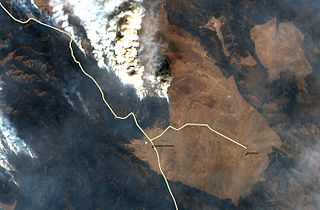
From 12 to 16 April 2015, a series of wildfires spread across southern Siberia, Russia. In the Republic of Khakassia, 29 people were killed and 6,000 left homeless. Further east in Zabaykalsky Krai, four people died in wildfires near Chita. Damage was also reported in Inner Mongolia.

On the morning of 1 July 2016, an Ilyushin Il-76 aircraft configured for aerial firefighting and belonging to the Russian Ministry of Emergency Situations crashed near Lake Baikal northeast of Irkutsk in Siberia, Russia. All ten crew members were killed.

Dmitry Medvedev's Second Cabinet was the composition of the Russian government from 18 May 2018 to 15 January 2020 under the leadership of Prime Minister Dmitry Medvedev.

The 2018 Washington wildfire season officially began June 1, 2018. A statewide state of emergency was declared by Governor Jay Inslee on July 31.
Dry, warm conditions in the spring set the stage for fires in Siberia. By May, 2008.
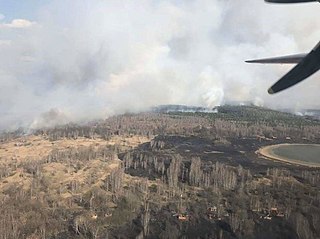
The 2020 Chernobyl Exclusion Zone wildfires were a series of wildfires that began burning inside Ukraine's Chernobyl Exclusion Zone in April 2020. The fires were largely extinguished within two weeks. At least one suspect was arrested for alleged arson.

The Siberian Republic was a unrecognized short-living state that existed on the territory of Russia during the Civil War.

From June 2021, the taiga forests in Siberia and the Far East region of Russia were hit by unprecedented wildfires, following record-breaking heat and drought. For the first time in recorded history, wildfire smoke reached the North Pole.
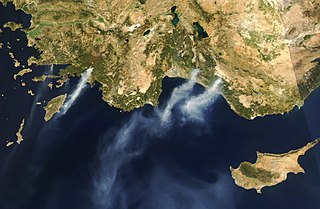
In July and August 2021, a series of more than two hundred wildfires burnt 1,700 square kilometres of forest in Turkey's Mediterranean Region in the worst-ever wildfire season in the country's history. The wildfires started in Manavgat, Antalya Province, on 28 July 2021, with the temperature around 37 °C (99 °F). As of 9 August 2021, two fires were still burning, both in Muğla. The fires are part of a larger series of wildfires, including those in neighbouring Greece, originating from a heatwave made more likely by climate change.


















